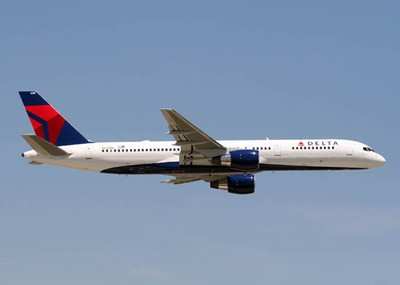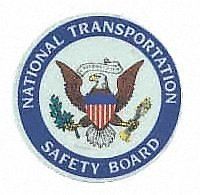Thu, Oct 16, 2008
Engines Should Be Pulled From Service Pending Checks, Board
Says
As a result of its ongoing investigation of an incident
involving a Pratt & Whitney PW2037 engine experiencing an
uncontained failure, the National Transportation Safety Board
issued an urgent recommendation Thursday to the Federal Aviation
Administration to require all Pratt & Whitney PW2037 engines be
removed from service for inspection of the second stage turbine
hubs when they have accumulated significantly fewer hours (10,880)
and/or cycles (4,392) than the incident engine.

On August 6, 2008, Delta Air Lines flight 624, a Boeing 757-232
equipped with PW2037 engines, experienced an uncontained failure of
the right engine’s high pressure turbine second stage hub at
McCarran International Airport in Las Vegas, NV.
According to the pilots, at the start of the takeoff roll they
heard a loud bang and observed that the right engine had lost
power. The pilots rejected the takeoff and the airplane returned to
the gate. All 166 passengers and the crew of four deplaned. There
was no fire or injuries.
 Examination of the incident airplane’s right engine
revealed a hole in the bottom of the core cowl that was in line
with a hole through the engine’s high pressure turbine. The
inspection also revealed missing lugs and cracks in the turbine
hub. Additionally, the Safety Board learned that at least four
other PW2037 second stage turbine hubs have had cracks in the blade
retaining lugs. And, NTSB has also learned that, during a routine
overhaul, an American Airlines PW2037 second stage turbine hub with
cracks in two adjacent blade retaining lugs was reported. The
Safety Board has requested information on all of these
hubs.
Examination of the incident airplane’s right engine
revealed a hole in the bottom of the core cowl that was in line
with a hole through the engine’s high pressure turbine. The
inspection also revealed missing lugs and cracks in the turbine
hub. Additionally, the Safety Board learned that at least four
other PW2037 second stage turbine hubs have had cracks in the blade
retaining lugs. And, NTSB has also learned that, during a routine
overhaul, an American Airlines PW2037 second stage turbine hub with
cracks in two adjacent blade retaining lugs was reported. The
Safety Board has requested information on all of these
hubs.
"These discoveries raise serious concerns and warrant immediate
action by the FAA," said NTSB Acting Chairman Mark V. Rosenker. "A
string of consecutively fractured blade retaining lugs could result
in the simultaneous release of multiple blades, which would exceed
the design capacity of the engine’s cases and result in an
uncontainment. Preventive safety measures must be taken."
The NTSB issued a second recommendation Thursday that would
require a continuing inspection schedule for the hubs until the
cause of previous instances of cracking is found and corrective
action is identified.
The Safety Board is still investigating this incident.
More News
Homing [ICAO] The procedure of using the direction-finding equipment of one radio station with the emission of another radio station, where at least one of the stations is mobile, >[...]
Aero Linx: European Regions Airline Association (ERA) The European Regions Airline Association (ERA) represents a diverse membership of over 50 airlines and more than 150 associate>[...]
A Few Questions AND Answers To Help You Get MORE Out of ANN! 1) I forgot my password. How do I find it? 1) Easy... click here and give us your e-mail address--we'll send it to you >[...]
While On Short Final, About 300 Ft, The Pilot Performed A Forced Landing Near Trees On September 7, 2025, about 0932 eastern daylight time, a CubCrafters Carbon Cub EX airplane, N4>[...]
Severe Icing The rate of ice accumulation is such that ice protection systems fail to remove the accumulation of ice and ice accumulates in locations not normally prone to icing, s>[...]
 ANN's Daily Aero-Term (10.13.25): Homing [ICAO]
ANN's Daily Aero-Term (10.13.25): Homing [ICAO] ANN's Daily Aero-Linx (10.13.25)
ANN's Daily Aero-Linx (10.13.25) ANN FAQ: Q&A 101
ANN FAQ: Q&A 101 NTSB Prelim: CubCrafters Carbon Cub
NTSB Prelim: CubCrafters Carbon Cub ANN's Daily Aero-Term (10.14.25): Severe Icing
ANN's Daily Aero-Term (10.14.25): Severe Icing




